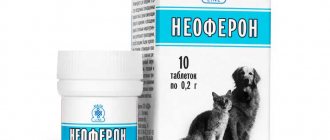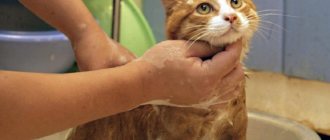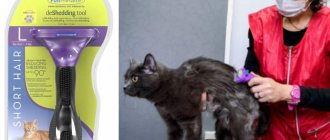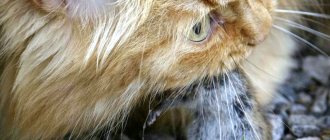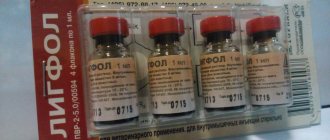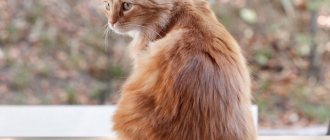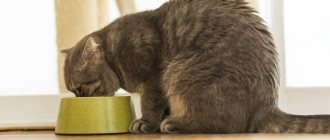The lemon catnip plant, or catnip, is a herbaceous plant belonging to the Lamiaceae family. The habitat of catnip is the entire European part of Russia. Catnip can be found in meadows and forests, and can also be seen in wastelands. The peculiarity of the plant is the presence of a pleasant aroma, reminiscent of a mixture of essential rose and lemon oil.
For cats, the smell of catnip is very pleasant. Sensing the smell of the plant, cats begin to behave very actively, rubbing against the plant, sniffing it and trying to eat it. Noticing a similar effect of the plant on the behavior of the animal, people began to grow catnip at home, as well as purchase dried bags of mint to correct the behavior of their pets.
Catnip - description, photo
Catnip (lat. Népeta catária) is a perennial herbaceous plant reaching a height of up to 100 cm. This name, like others - catnip, lemon catnip, the grass received thanks to the indifference of representatives of the corresponding family to it.
Catnip. Click on the photo to enlarge.
Outwardly it looks like a straight long stem on which heart-shaped leaves with jagged edges are attached. The flowers are small, with purple or violet splashes. The aroma contains light notes of lemon. This description is conditional, since there are varieties.
If a person can confuse catnip with other greens, for example, lemon balm, then a cat will never be mistaken.
Why cats love her
The secret why cats love catnip so much and its aroma, while they remain indifferent to others with a similar smell, has long been revealed. Our pets are attracted not by the aromatic smell itself, but by its source - nepetalactone.
This substance affects the neurons of the cat's brain, causing short-term hallucinations and changing the animal's behavior pattern.
It is difficult to predict exactly how a pet will behave under its influence. Different effects are observed. A passive animal can begin to play actively, and a violent one can calm down.
The video clearly demonstrates possible reactions:
Danger
Without knowing how to use catnip, it's best not to take risks. There is no evidence that regular use of the plant has a negative effect on the behavior of the animal, but there is no refuting data either.
In addition, cats often overeat the plant if they are allowed outside. The intoxicating effect and attractiveness of the delicacy cause indigestion or even poisoning.
You should not allow your cat to eat mint if she is pregnant with kittens, as this may affect their health.
How to use catnip
Cat grass can be used in three forms: fresh, dried and spray.
The question arises: what is it for, why give it to your pet consciously?
Additionally, to keep your purr entertained, catnip can be used to:
- smoothing out a stressful situation, for example when traveling or going to the veterinarian;
- training - go to the litter box, sharpen nails, sleep in the house.
It is also a good natural anthelmintic.
Your pet can taste fresh mint outside when he goes for a walk, or you can pick some greens.
Don't rush to throw away the remaining greens if you pick too many! This herb does not lose its properties even when dried. Grinded dry mixture is also sold in pet stores and is called catnip.
Dry catnip is sewn into toys and scratching posts to attract the attention of furry pets.
If your toy does not contain dried catnip and is not of interest to your pet, then you can use a catnip extract diluted with water in the form of a spray. Spray on a toy and your cat won't want to part with it. In the same way, you can accustom your pet to a new place for sharpening its claws.
Growing catnip in the garden
Growing such catnip in a country house, garden or garden is not difficult. You can plant both wild varieties of catnip in the garden and purchase varietal cultivated varieties that are distinguished by their excellent decorative properties.
With equal success, catnip can grow in bright sun and partial shade. It can be planted next to other ornamental plants, emphasizing the beauty of the created flower garden.
Just remember to regularly trim the overgrown bush , maintaining the desired shape of the decorative flower bed.
The gardener will only need to dig up the ground, add a small amount of organic fertilizer, plant catnip bushes and subsequently water the plantings once a month. This flower and ornamental crop will not require any care from the gardener. It is only known that catnip responds positively to the application of organic fertilizers, so if you want to achieve active growth and long-term flowering, then once every six months you should feed the plantings with a small amount of mullein or humus.
Advice . This plant responds well to watering and the application of organic fertilizers, growing from a nondescript bush into a lush flowering flowerbed.
Of the insect pests, only spider mites are terrible for this plant. It is necessary to regularly inspect catnip, and if this pest is detected, spray the plantings with insecticides, which will easily solve the problem with spider mites.
Read also: The best varieties of grapes in Tatarstan
Is catnip harmful to cats and when should it not be used?
Seeing how their pets sometimes behave, owners wonder if catnip is harmful? Studies have shown that it is harmless to animals and people and is not addictive. This is a big plus.
However, you need to know when to stop. By nature, cats intuitively know when to stop. Otherwise, having found a bush of the treasured grass on the street, the animal would not leave it. If you still overeat the purr, then you can expect only a slight stomach upset.
The pet also has unpredictable reactions. If you notice that your pet is aggressive and uncontrollable after interacting with the catnip, then it is better to protect it from the source of such behavior.
Pregnant cats should not be allowed near the grass. Excitation of the nervous system negatively affects the bearing of kittens.
Influence
Catnip for cats is a kind of drug that emits an aroma that is attractive to animals. Unlike regular peppermint, nepetalactone is pleasant to the animal's nose, and small amounts of it in the bloodstream cause unpredictable chemical reactions in the brain.
Because of this, the animal may experience a mixture of different states or even severe hallucinations.
This effect greatly affects the animal’s nervous system, making it dependent. Therefore, you need to be careful when using this product.
How to grow catnip in a pot
If you don’t have a vegetable garden or garden, you don’t know where to find fresh catnip, but you want to pamper your pet, then don’t be upset. Catnip in a pot is the solution.
Having a plant on the windowsill, you can always please your purr with entertainment in the form of grass. By growing it yourself, you can be sure of its purity, as well as control consumption (if, of course, the bush is isolated).
So, to grow catnip at home you need:
- seeds or seedlings. Purchased at a pet store. You can also dig it up from the street or ask for a cutting from someone who has already grown catnip.
- medium sized pot;
- some land;
- sunny place, inaccessible to animals.
Catnip shoots in the photo
Plant seeds or seedlings in the ground. Fill the pot approximately halfway. You can cover it with film, creating greenhouse conditions. In about two weeks the first shoots should appear.
As the catnip grows, the strongest shoots will emerge. You should make room for them and secure their stems, for example, to a wire.
Keep your pet away from young greenery! He can damage it, and the bushes will never grow again.
If you follow all the rules for growing a plant, then approximately 2.5 months after planting, the cat grass should bloom. Feel free to give your pet fresh greens.
No reaction
In reviews of catnip, some owners indicate a lack of reaction. For the most part, cats, in 1 case out of 4, do not show any desire to consume the plant. This may be due to the genetic characteristics of the breed or age.
Why does a cat sneeze - diagnosis of the cause, treatment at home and tips for caring for cats with a cold (video + 110 photos)A cat without water - how long can it live, features and possible consequences of dehydration (125 photos)
How to determine the gender of a kitten - learn to distinguish kittens yourself. Advice from breeders and veterinarians on how to distinguish the sex of kittens (120 photos and videos)
It is believed that cats are drawn to the plant because its smell is similar to the secretions, which signal that the individual is ready to mate.
An animal may simply lack a certain type of receptor that is irritated when tiny particles of oils come into contact with them. The reaction from immature, castrated or old individuals is also imperceptible.
Where to buy and how much it costs
If the idea of gardening doesn't appeal to you, catnip grass is available at almost any pet supply store. Therefore, the question of where to get grass for cats is easily resolved. These will mostly be sachets of dried leaves and flowers or an extract in liquid form.
For 15 grams of dry purring pleasure you will have to pay about 140 rubles.
It is more convenient to use a spray, but its price is more expensive - around 300 rubles per 100 ml.
No matter what form the catnip is purchased in, the packaging should be sealed tightly. The essential oil evaporates over time, rendering the herb ineffective.

